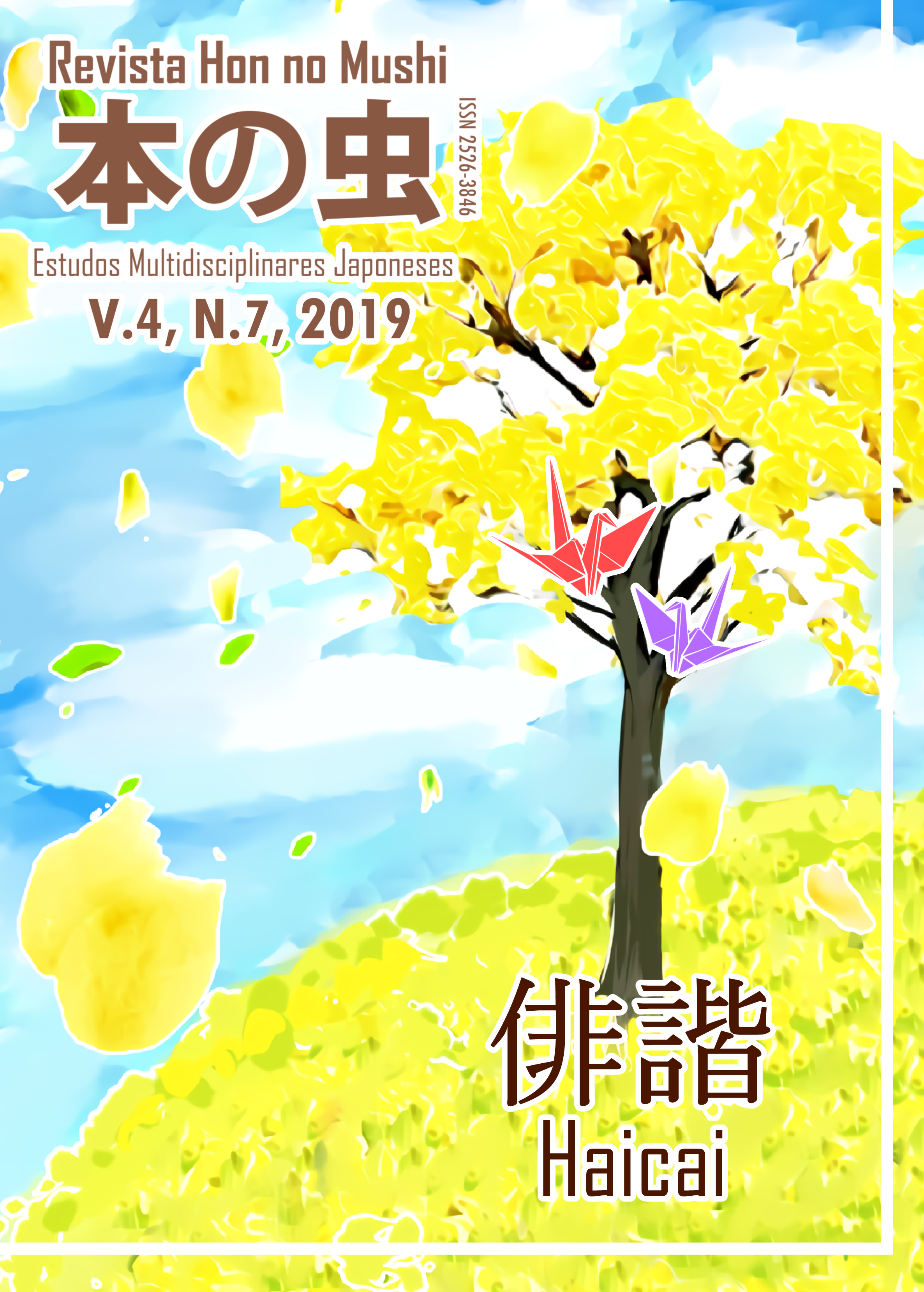HAIKU PRODUCTION BY JAPANESE IMMIGRANTS IN AMAZONAS
Keywords:
Haiku. Japanese immigration in the Amazon. Nature.Abstract
One of the criteria for developing the haiku poem is the presence of kigo, which literally means the term of the season, and can perceive, in this sense, the appreciation of nature through this poetic art concise, consisting of verses of 17 syllables, in order of 5-7-5 syllables. Thus, the present study aims to bring reflections about the haiku poems produced by the Japanese immigrants in Amazonas, pointing out the relationship between man and the environment, in order to make a simple and brief development of the fauna and flora of the Amazon region. Alfredo Bosi (2015, p.9) affirms this creative, reflexive and imaginative character of poetry as "the shelter of memory, the tones and modulations of affection, the play of imagination and the stimulus to reflect, sometimes Act". It is an investigation of bibliographical character and, in this sense, it rests on the readings of the pertinent texts, fichamento of the theoretical works and the corpus. It is adopted as a procedure for the research of the corpus, initially, the translations of the poems into Portuguese of works written in Japanese language, followed later by interpretation and analysis, emphasizing the contents related to the ecosystem, interwoven in them. The importance of this research is based on the peculiarity with which the haiku poems are produced in the Amazon by the Japanese immigrants, employing as kigo the elements of the Amazonian nature. Also, it was verified that there is a guild for the production of haiku poems in Japanese language by the group of immigrants linked to the Brazilian-Brazilian Association of the Western Amazon, whose meeting happens monthly. It is a preliminary investigation that highlights the harmony of man with the Amazonian nature.
Downloads
References
ASSOCIAÇÃO NIPO BRASILEIRA DA AMAZÔNIA OCIDENTAL; MANAUS KUKAI. Coletânea de haiku Manaus 2016. Volume 32, 2017.
BEÇA, Aníbal. Folhas da Selva. Manaus: Editora Valer, 2006.
BOSI, Alfredo. Entre a literatura e a história. São Paulo: Editora 34, 2015.
ISHIKAWA, Noêmia Kazue. Embaúba: uma árvore e muitas vidas. São Paulo: Escrituras Editora, 2016.
GOGA, Masuda. O haicai no Brasil. Tradução: José Yamashiro. São Paulo: editora oriento, 1988.
PEREIRA, Fausto Pinheiro; YOSHIKAWA, Mayumi Edna Iko. A escrita japonesa. In MUKAI, Yûki; SUZUKI, Tae (orgs.). Gramática da Língua Japonesa para Falantes do Português. Coleção Japão em foco. Campinas, SP: Pontes Editores, 2016.
SUZUKI, Tae. A escrita japonesa. In Revista do Centro de Estudos Japoneses da USP. São Paulo: 1985, volume 5, p. 53-61.
TSUJITA, Masakazu. Kimigayo to tomoni. In ONODA, Ichirō et al. (orgs.). Hatô no Yonsenri: dai ikkai Amazon kaitakudan. Edição memorial manuscrito. Santosu Maru, 10 fev.1953, p. 22.
WAKISAKA, Geny. Man’ yôshû: vereda do poema clássico japonês. São Paulo: Editora Hucitec, 1992.
YAMAGUCHI, Toshiko. Haiku Amazônia. Tokyo: Naganae Printing, 1992.
YAMAMOTO, Eliane Toshie Korogui. Aspectos do Romantismo no Japão: um estudo sobre o autor Shimazaki Tôson e sua obra Waka
Downloads
Published
Issue
Section
License
The copyright belongs to the Hon Journal in Mishi - Multidisciplinary Japanese Studies and to the authors of each article. All work or part of it, when quoted or used, must be referenced.




